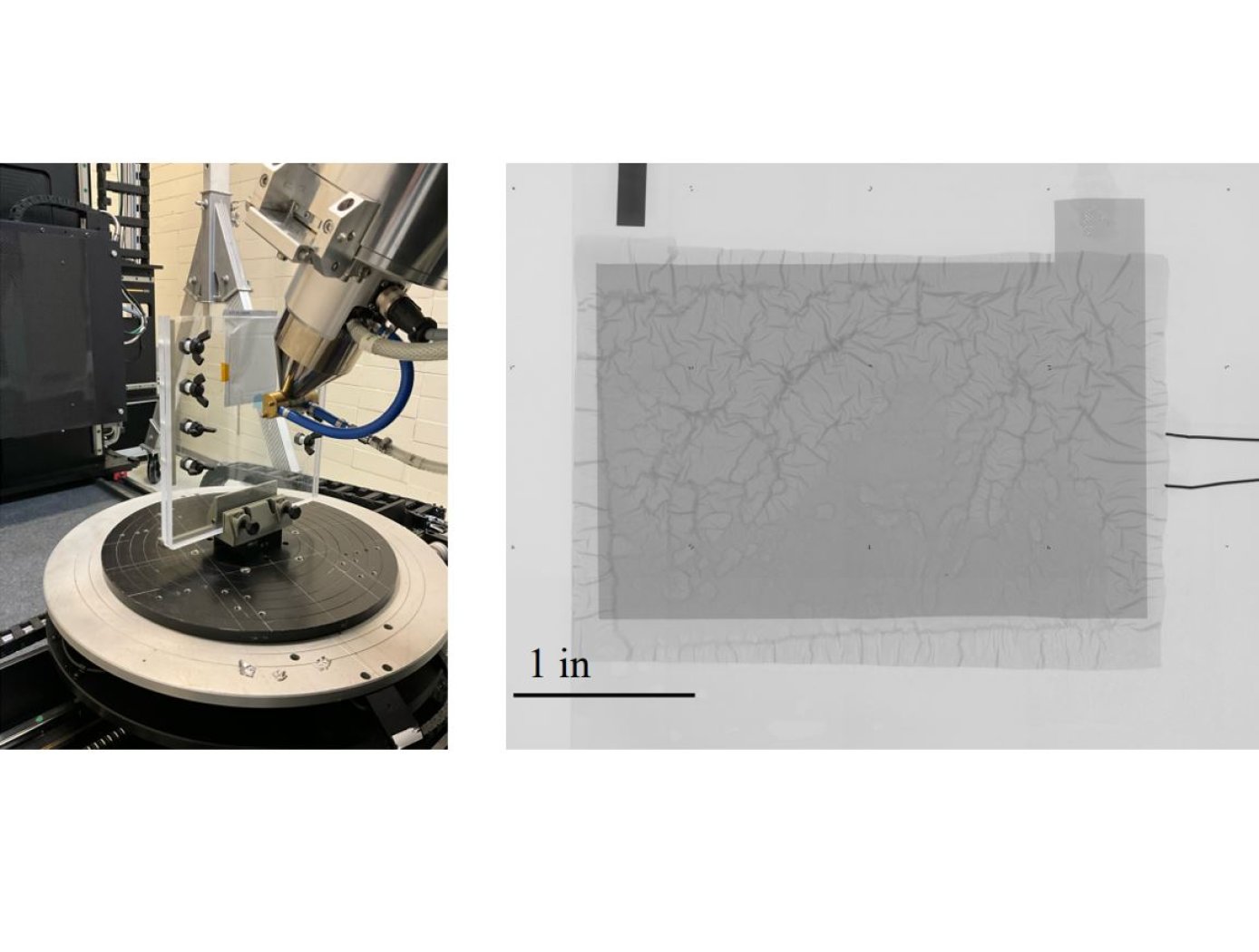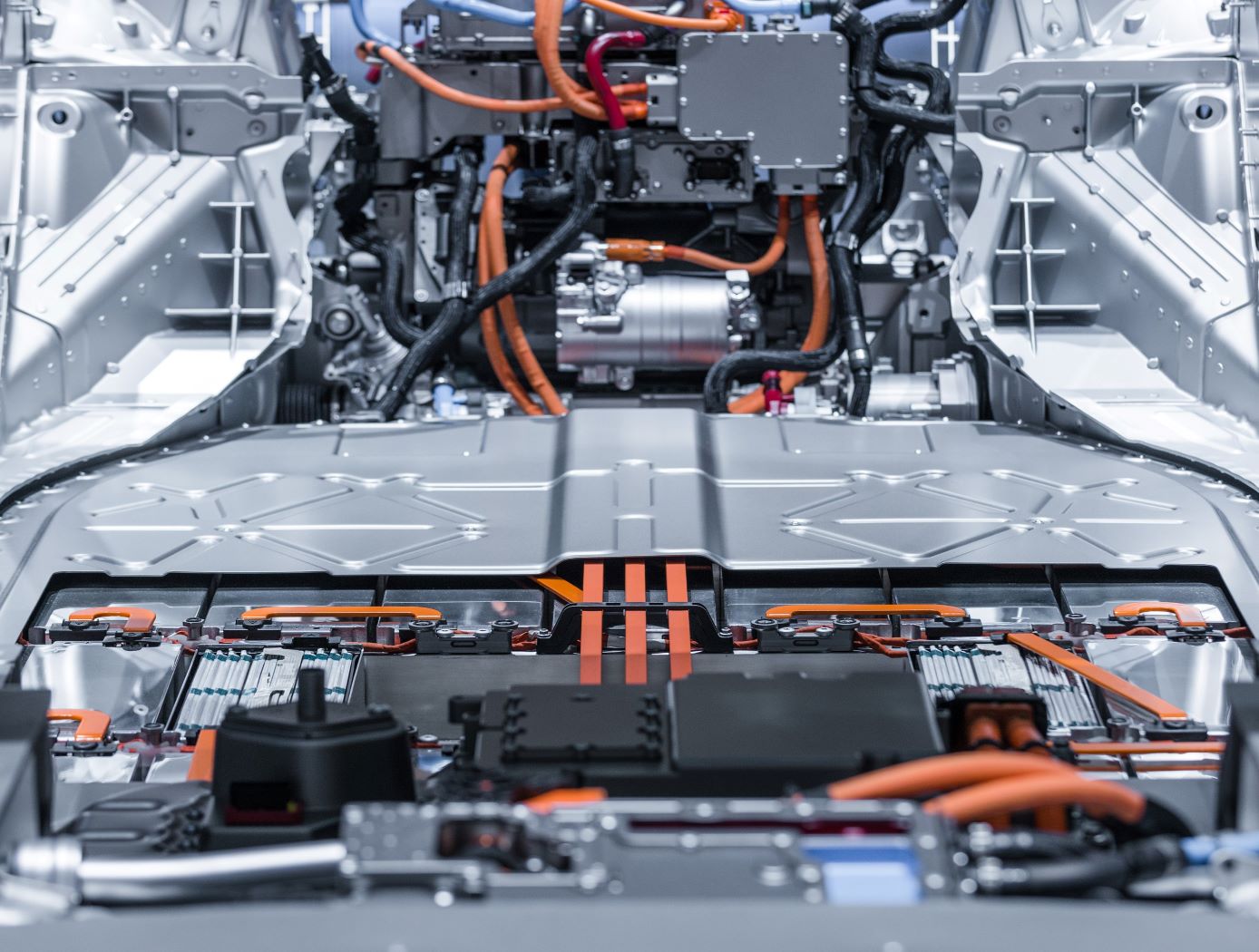Search
Optics

Fingerprinting for Rapid Battery Inspection
The technology utilizes photopolymer droplets (invisible to the digital radiograph) with embedded radiopaque fragments to create randomized fingerprints on battery samples. The droplets are deposited using a jig (see figure on right) that precisely positions samples. Then, at different points during battery R&D testing or use, digital radiography imaging with micron-level resolution can be performed.
The high-resolution imaging required to detect dendrite formation requires images to be collected in multiple “tiles” as shown below. The randomized fingerprints uniquely identify relative positioning of these tiles, allowing rapid assembly of composite high-resolution images from multiple tiles.
This same composite creation process can be used for images taken at a series of points in time during testing, and background subtraction can be applied to efficiently compare how the battery is changing over successive charge/discharge cycles to identify dendrite formation. This inspection technique is proven effective for thin-film pouch cell prototypes at NASA, and it works well at the lowest available x-ray energy level (limiting impact on the samples). The Fingerprinting for Rapid Battery Inspection technology is available for patent licensing.
Power Generation and Storage

Adaptive Battery Cell Chamber for TR Analysis
Thermal runaway analysis provides unique insights into TR by allowing researchers to tally the total thermal energy release, plus the energy fractions liberated by venting, and energy that conducts through a cell casing – such as that of a 4Ah Amprius cell, or a 10Ah SVolt cell – both for which the ABCC was originally designed to accommodate. This unique data is important in understanding Li-ion battery thermal design and analysis which may ultimately lead to safer Li-ion batteries with increased resistance to TR.
The ABCC is designed to work in tandem with the FTRC when coupled together for TR testing: The battery test subject is first sandwiched between the two chamber halves, or diaphragms, and then secured with fasteners. The ABCC – which in different embodiments may have varying outlet diameters depending on battery sizing – is then coupled to the FTRC bore assembly using unique adapters and the aforemen-tioned pin system. A threaded port is centered on both diaphragms to accommodate one of several TR trigger mechanisms, such as a 400-watt heating element or a nail penetrator with a 9mm insertion depth.
With the main hardware assembled, the user can leverage the ABCC’s configurability into deciding to either rely solely on external instrumen-tation within the bore and baffle assembly (external of the ABCC), or to utilize the ABCC’s already tapped sensor ports to install thermocouples in a variety of different geometric layouts to provide better resolution of thermal measurements. Wiring can be run through the “battery cell connector support” to its multi-pin circular connector. After initiating TR in the battery cell, the FTRC will absorb the ejecta and gases expelled by ABCC for analysis.
The Adaptive Battery Cell Chamber is at TRL 6 (system/subsystem model or prototype demonstrated in a relevant environment), and it is now available for licensing. Please note that NASA does not manufacture products itself for commercial sale.
Power Generation and Storage

Triggering Li-ion Battery Cells with Laser Radiation
This technology is based upon a 120-watt IR laser is coupled to a fiber optic cable that is routed from the output of the laser into a series of focusing optics which directs energy onto a battery cell mounted to a test stand. When activated, heat from the laser penetrates the metal housing, heating the internals of the cell. At a specific temperature, the separator in the first few layers of the cell melts allowing the anode and cathode to make contact and initiates an internal short circuit. The internal short circuit then propagates throughout the battery eventually causing thermal runaway. The lower the wavelength of the laser used to produce the thermal runaway, the more heat-energy will be absorbed into the cell producing a faster result. The fiber optic cable can be terminated into a series of optics to focus the laser at a specific target, or the fiber optic cable can be stripped bare and placed next to the target to heat an isolated location. This method can also be used on a wide variety of cells, including Li-ion pouch cells, Li-ion cylindrical cells and Li-ion Large format cells.
The innovation Triggering Li-ion Cells with Laser Radiation is at TRL 6 (which means a system/subsystem prototype has been demonstrated in a relevant environment) and the related patent application is now available to license and develop into a commercial product. Please note that NASA does not manufacture products itself for commercial sale.



